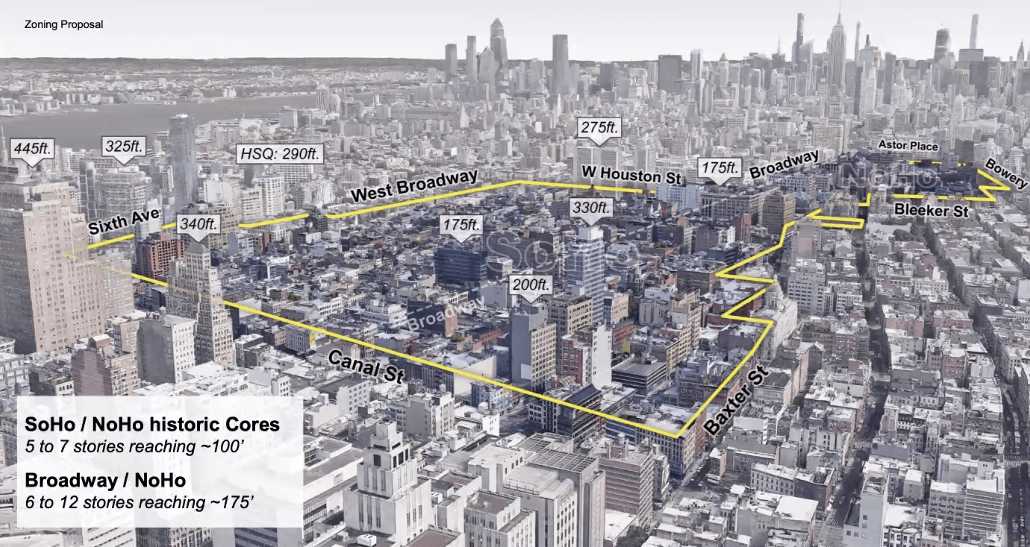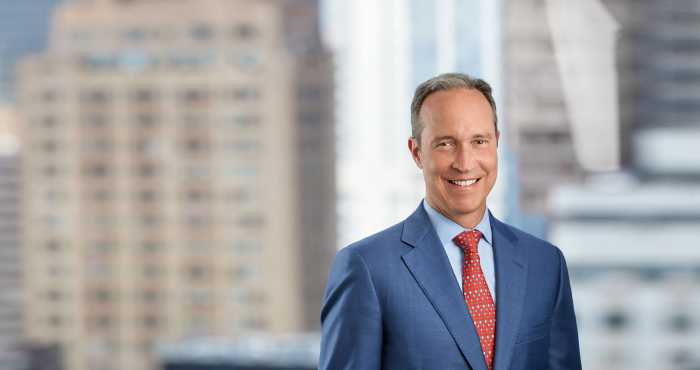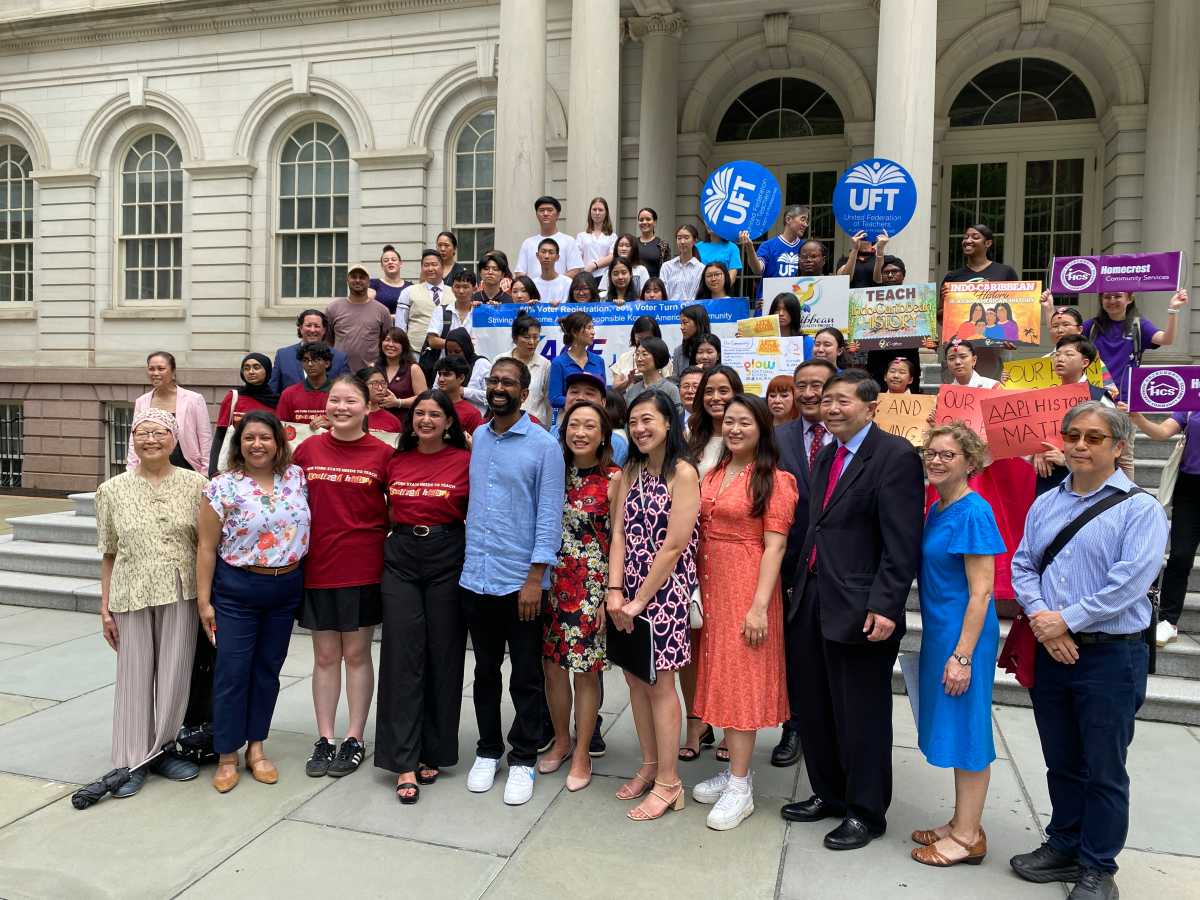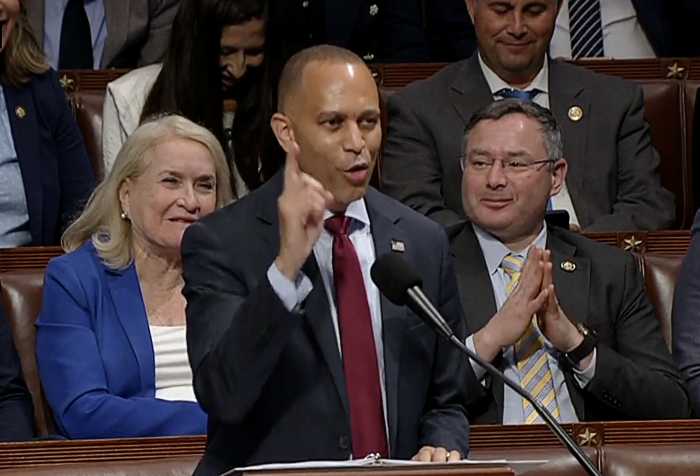Manhattan Borough President Gale Brewer heard testimony Monday evening on the de Blasio administration’s plan to rezone SoHo and NoHo, the last hurdle in the advisory process for approving the change.
A month after Manhattan Community Board 2 adopted a resolution to reject the rezoning, which city officials hope will create more affordable housing in the affluent enclave, Brewer will give the administration her recommendation of whether or not it should proceed before the Department of City Planning (DCP) evaluates the plan for themselves.
Erik Botsford, deputy director of the Manhattan division of DCP, argued that the zoning change would not as destructive to the current way of life that opponents to the plan suspect, but could better reflect how space is already utilized.
“[SoHo and NoHo] are not uniformly industrial or uniformly commercial or residential, but are a mix of all of these from block to block, building to building, and in many cases from floor to floor within a building,” Botsford said. “The proposal would also contain no changes to existing joint living quarters for artists. I want to emphasize this point again, if you’re a certified artists residing in SoHo or NoHo pursuant to [Joint Living Word Quarters for Artists], the proposed zoning would not affect your status as a certified artist, or your ability to remain in your home, or create your art, no change.”
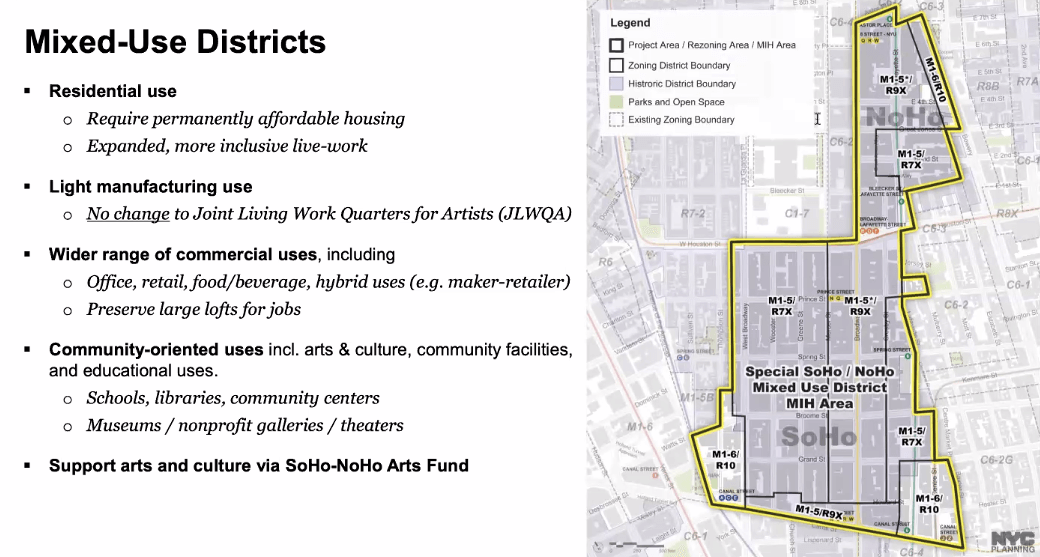
Jessica Katz, Executive Director at Citizens Housing and Planning, said during a separate presentation, though during the same meeting that her research shows that Manhattan’s Community Board 7 has created ten times more affordable housing than Community Board 2, which includes SoHo and NoHo.
Jeannine Kiely, Chair of CB2, said the group felt as through their firm stance against the rezoning plan was not taken seriously by the city as no changes were made as a result of the resolution, especially as it was passed with a nearly unanimous votes.
“I know Gale Brewer and her entire staff were at all of these meetings in 2020 … We were a little disappointed in that that resolution really didn’t have any impact,” Kiely said. “The plan fails to achieve affordable housing objectives and increases displacement, it fails to maintain the mixed use neighborhood, it fails to secure a future, it fails to protect the six historic districts fails to mitigate and listen to the community, and it completely failed outreach to Chinatown.”
Whether or not Brewer plans to give the plan an advisory nod is not clear at the moment as she will deliberate on the panel discussion, she asked presenters such as Katz and Botsford to answer to why more units of affordable housing is not possible.
How do we get to 50% or 75% affordable so that we really have something that is going to make the community more affordable. Every time I bring this up, I’m told that if we do such then we are jeopardizing Mandatory Inclusionary Housing citywide,” Brewer asked
Steve Herrick, executive director of Cooper Square Committee, said that MIH falls short of this need and without city-owned land or nonprofit run housing programs, deeper affordability is simply not in the cards. Ultimately, according to Herrick, this has the potential to undermine the incentive for developers from building housing.
Brewer continued to press panelists to discuss further how the neighborhood could be saved from developers building commercial space, as would be their right, instead of housing. Botsford expressed confidence that SoHo and NoHo’s status as a “hot” place to live will discourage office or retail development.
Congresswoman Carolyn Maloney chimed in, damning the plan and urging not only the city to back down, but for Brewer to evaluate the plan with a “very sharp pencil.”
“I have seen no guarantee of an increase in neighborhood public schools, seats, sanitation, public services, public and open recreational green space to accommodate accommodate the incredible increase in density. What are they doing, trying to destroy not only in SoHo/NoHo, but Manhattan?” Maloney said. “This is the third rezoning proposal that I know in a community that I represent that has been rushed through in the closing days of this administration.”
For background, City Hall’s proposal seeks to change course from M1-5B zoning currently designed to allow for manufacturing and joint living/workspace for artists in sections defined by Canal Street to the south, Houston Street and Astor Place to the north, Lafayette Street and the Bowery to the east, and Sixth Avenue and West Broadway to the west.
But by the DCP’s numbers, no less than 19% of these housing units will fall within the scope of the city’s inclusionary housing mandates, between about 621 to 940, to fall within the price range of low income New Yorkers, as released in a draft of the plan in October 2020.



